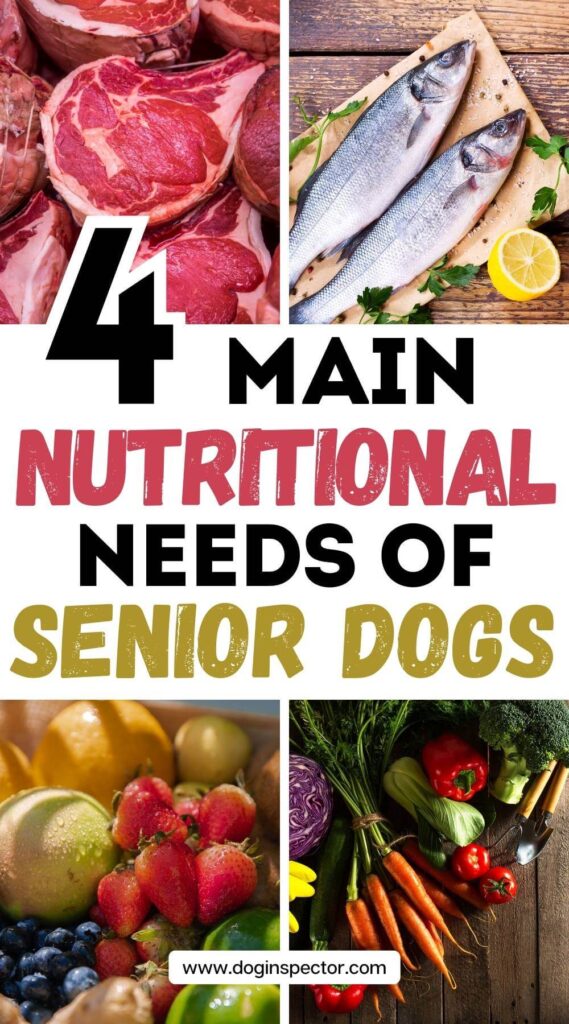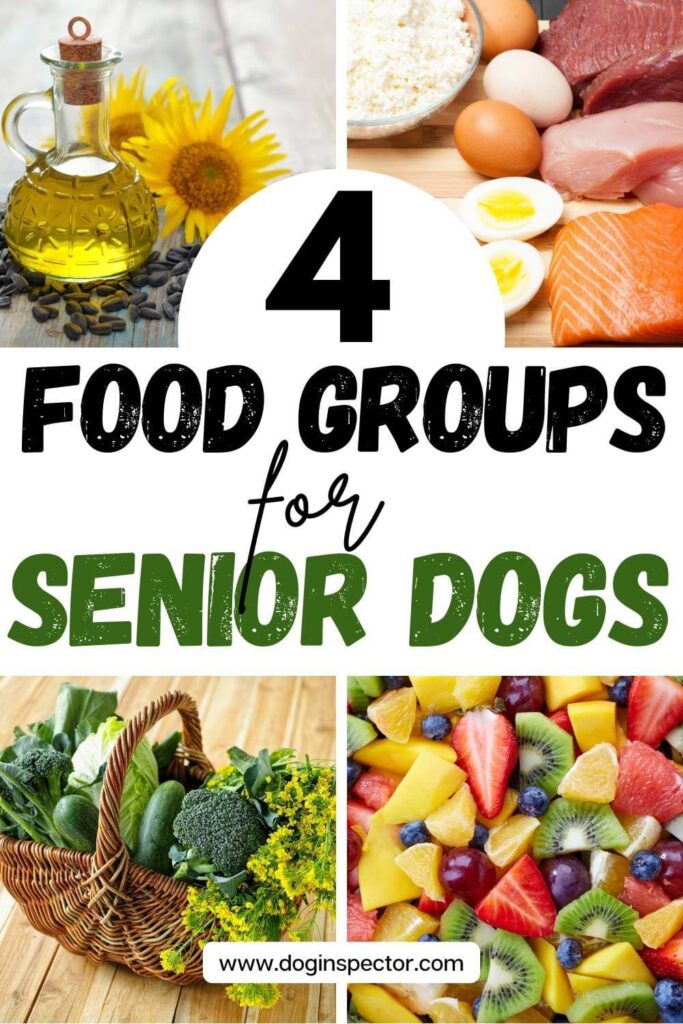4 Main Nutritional Needs of Senior Dogs
This post shows you the 4 Main Nutritional Needs of Senior Dogs.

As dogs age, their bodies undergo significant changes, and their diet must adapt to support their health.
They start having slower metabolism, meaning they need fewer calories but more nutrients as they age. In addition, they may experience joint problems and weakened immune systems as they age. This is why they need powerful natural nutrients supporting joint health and mobility.
This guide will walk you through senior dogs’ four main nutritional needs and how to meet them with the right diet.
Meeting these needs can help your dog stay active, happy, and healthy in their golden years.

1 High-Quality Protein
Protein is one of the most nutritional needs of senior dogs as they will naturally lose muscle mass with age. That’s why they need more high-quality protein to give them energy and maintain the muscle mass.
There’s outdated advice that senior dogs shouldn’t eat too much protein because it puts a strain on their kidneys, but it’s not true.
Senior dogs need protein, as without it, they will lose muscle mass and become weaker and less active. This will not only make them unhappy and impact your daily life but also cause several health issues with joints and mobility!
Protein is the foundation of a healthy body, and that’s true for both us and dogs!
So, as dogs age, their energy needs change, and they need really good sources of protein.
Dogs need at least 18–25% protein in their diet, and some senior dogs need more!
What to look for in dog food:
Food examples:
If you’re cooking for your dog, focus on lean, high-quality protein sources and make meals fun by mixing protein with healthy fibers (like cooked pumpkin or sweet potato).
2 Healthy Fats (Omega-3 and Omega-6 Fatty Acids)
Healthy fats, like omega-3 and omega-6 fatty acids, are essential for senior dogs. For senior dogs, you need to include both omega-6 and omega-3 in their diet and have a proper omega-3 to omega-6 ratio of around 1:4 or 1:5.
Omega-3 fatty acids have multiple benefits, including improving brain health, but they also reduce inflammation, which is especially important for dogs that have joint pain. Omega-3 is also important for brain health and cognitive functions as dogs age.
Meanwhile, omega-6 fatty acids are vital as an energy source for shiny coat and healthy skin.
What to look for in food:
Food examples:
3 Fiber for Digestive Health
As dogs age, their metabolism slows down, and they become more prone to digestive issues and constipation. This is why vets recommend including more healthy fiber in senior dog food.
Fiber regulates digestion by adding bulk to stool and creates a healthy environment in the gut by promoting the growth of beneficial bacteria.
Soluble fiber supports nutrient absorption, while insoluble fiber, since it can’t be digested, adds bulk to stool and helps move waste through the digestive tract.
Together, soluble and insoluble fiber prevent constipation, which often affects senior dogs, and improve overall gut health.
What to look for in food:
Food examples:
When giving your senior dog extra fiber, start with small amounts. Choose vegetables that are easy to digest, low in calories, and rich in fiber, like sweet potato and pumpkin.
Observe how your dog reacts. If they handle it well, you can increase the amount and start including fiber in their meals several times a week.
Don’t give too much fiber all at once, as it may cause bloating, gas, or diarrhea.
4 Antioxidants and Essential Vitamins
As dogs age, their natural immune system, which fights infections, becomes more vulnerable. Additionally, they experience increased cellular damage as part of the aging process.
This is why antioxidants and vitamins are crucial. While they won’t work miracles, they are essential for maintaining overall health.
Dogs need extra vitamins A and E to fight free radicals and slow down aging. Vitamin D and calcium are important for strong bones and a healthy body, while B vitamins support brain function, energy, and other critical processes.
These nutrients help senior dogs live longer, healthier lives and allow you, as a responsible dog owner, to enjoy more time with them.
What to look for in food:
Food examples:
Learn how to read labels on senior dog foods (I covered this in detail in my Dog Nutrition Guide). Choose foods high in protein and fortified with essential vitamins and minerals. Check this senior dog food as an example.
Additionally, include fresh foods rich in these nutrients to give your dog an extra boost. These small changes add up over time—trust me!
High-quality protein, healthy fats, fiber, and antioxidants are the cornerstones of a senior dog’s diet.
When you understand the nutritional needs of senior dogs, you can help your dogs live a healthier, happier life as they age.
What changes have you made to your senior dog’s diet? Share your tips in the comments below!
Don’t forget to pin this post so you’ll always have these guidelines handy!
Love, life, and fur forever!

This post showed you 4 Main Nutritional Needs of Senior Dogs.
You may also like: